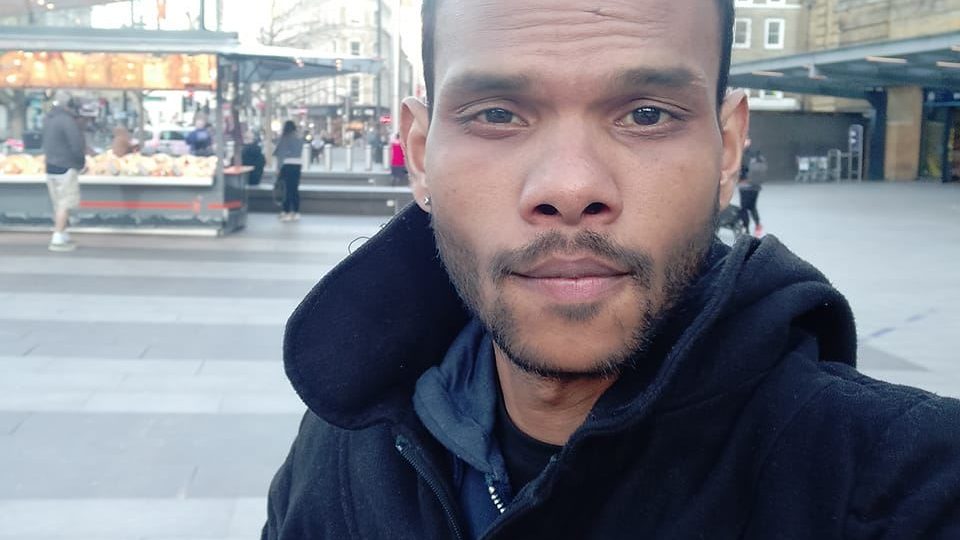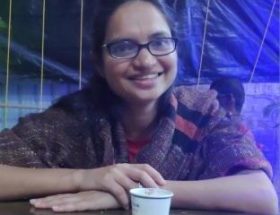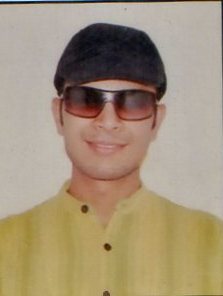Sumeet Samos
Introduction
During a conversation with a friend recently, he suggested I check out the Gates Cambridge Scholarships. Casually, I checked into LinkedIn, and immediately three to four names popped up: one Tamil Brahmin and the other three Bengali Brahmins. We smiled at each other and said, “Of course, who else?” without being surprised at it. This preponderance of Brahmins in elite academic spaces, both in India and abroad, is very well known. Brahmins, eloquently, with a gentle smile and body presence, can animate big conferences and seminars on any topic under the sky, from climate action, the global south, the colonial past, Hindutva nationalism, and so on. They sit there in the inner chambers of the global knowledge production system with their own networks, which smoothly facilitate not just their monopoly over knowledge creation but also the reproduction of themselves as a class among the Brahmins and among the global elites. The facilitators who regulate the entry of people into this class sit on the boards of journals, scholarship committees, publishing spaces, department chairs, act as references, and so on. The inner lives, hidden channels, and commonly understood language that reproduce this powerful class with its branches spread out in the sub-continent have hardly ever been studied. As someone who is interested in unearthing the mechanisms and processes through which this class is reproduced among Brahmins, I have followed personal interactions on their Facebook profiles, read their obituaries or fond memories of popular academicians, and drawn their family trees. Whenever I got an opportunity to sit beside them, I quietly listened to their excited conversations, asking about each other’s siblings and mutual friends whom they had known for a long period of time. Given the limited access, I could only explore a partial picture of how class solidarity is produced through the above means. The younger Brahmins who try to get into academia, mostly the Tamil Brahmins and Bengali Brahmins, are either facilitated by their previous generations in these spaces or have solid family support to ensure their entry into these high-profile spaces. At times, they also benefit from both support systems. The mercantile castes can be caricatured as greedy and luxurious and be associated with terms such as ‘Bania capitalism’, and the intermediary peasant castes can be framed under terms such as ‘bullock capitalists’ and ‘tractor capitalists’ (Rudolphs and Jaffrelot), but there has been no effort so far to study the ‘Academic Brahmins’. If dominant castes can be characterized as having political and economic power and land ownership, then which attributes characterize the ‘Academic Brahmins’ who are ubiquitous?
The Western academics who have spent significant time in the subcontinent are aware of this, yet they would not undertake any projects or conceptual frameworks to study this class reproduction. By doing so, they would lose their associates and intermediaries. From ‘rural middle class’ to ‘Dalit middle class’, a range of such categories have been created and used extensively to understand the sub-altern groups, often caricaturing them, while little attention has been given to understand the ‘Academic Brahmins’, a powerful elite class with its sub-branches in civil society, media, public policy, think tanks, and government advisory boards.
Towards Understanding Brahmins beyond existing parameters
The ‘Academic Brahmins’ as I call them are different from the ‘Tech Brahmins’, ‘Religious Brahmins’, ‘Sanghi Brahmins’, ‘Harmless Middle Class Brahmins’, and ‘Feudal Brahmins’ (Bhumihar land owners) in some ways yet similar in other ways. These are not neatly divided categories, and they can overlap with each other to various degrees when someone moves from one to the other and holds onto a few values from each category. They may also negotiate with each other to ensure their position is consolidated within the category they want to associate with. For example, many young Brahmin academics in social sciences and humanities negotiate with their parents, relatives, and friends from other Brahmin categories so that they are supplied with a steady flow of support while also being avid readers of anti-caste literature and working among the subaltern groups. However, this group cannot be understood with the familiar and narrow criteria of purity, pollution, overt caste pronunciations, and food restrictions that social scientists and a section of anti-caste discourse often employ. Such a framework restricts understanding Brahmins as a class that does not evolve with time and primarily focuses on certain traditional values attached to them. Popular political parlances such as ‘Manuwadis’ and bashing Sanatana Dharma are quite inadequate to capture this group because they might not believe in such archaic arguments, and on the contrary, they would argue that such references are only applicable to the deeply religious and caste-minded Brahmins and not them. Dr. B.R. Ambedkar had referred to Brahmins as ‘changing and chopping with time’ and the scope of this reference should be widened beyond values to modus operandi, class solidarity, and class reproduction in the present times. There is a plethora of literature on how Dalits and lower castes use caste in political mobilizations and have also used it in the past to elevate their status during census enumerations in the early 19th century, thus solidifying or leading to a process of’substantializing’ caste. M.N. Srinivas, Bernard Cohn, Nicolas Dirks, Rajdeep Sardesais, and Rahul Kanwals use such arguments.
Eventually, it comes down to the binary of Brahmins not subscribing to traditional values as non-Brahmanical and those subscribing as Brahminical. The former is a positive change, and the latter is regressive. Andre Beteille, in fact, went on to argue that the hold of caste is losing its strength among the urban middle-class upper castes, and now family plays the key role. Many times, such an argument comes from a superficial view of self-fashioning among Brahmins. And the self-fashioning of ‘Academic Brahmins’ detaches their caste from them to be counted as one among the cosmopolitan elites as well as representatives from the global south who need to be recognized by invoking post-colonial discourse. It does not tell us anything about the way classes are reproduced among Brahmins as professions and capital accumulation take place in the diversifying global economy.
Diverse in speaking, persistent in reproducing
The ‘Tech-brahmins’, ‘Sanghi Brahmins’, ‘Religious Brahmins’ self-fashion themselves explicitly as Brahmins, make references to their merit, hard work, community’s investment in education, cultural heritage through ‘classical art forms’, proud history, caste markers, caste-based food habits, and are ardent critiques of reservation. They straddle between victimhood and superiority simultaneously; they claim victimhood due to the state directed welfare measures and reservation to the SC, ST, OBC communities, which according to them have deprived them, and they claim superiority for having guided the Indian social order historically by being at the helm of affairs. The right-wing influencer J. Sai Deepak is a great example of such self-fashioning, which has a lot of traction among young Brahmins in IITs.
The ‘Academic Brahmins’ might not believe in some of the above characteristics exhibited by the ‘Tech Brahmins’ or ‘Religious Brahmins’ who would display their strong affinity towards their superior Brahmin origin without any or little inhibition in working spaces and public discourse. Even if the ‘Academic Brahmins’ may believe in a few of the characteristics, they would regulate it in public spaces where their progressiveness can be scrutinized or can use euphemisms and verbal jugglery to argue the same points. However, despite these differences, reproducing themselves as a class within the Brahmins is not possible without having an affinity with fellow ‘Academic Brahmins’ who would open the gates after the ‘Family Brahmins’ provide the initial input. Both of these classes ultimately lead to the concentration and accumulation of capital within clan-like subgroups and reproduce themselves despite differences in articulating their understanding of caste and self-fashioning.
Challenges in studying Brahmins
The debates around caste in academic spaces have usually revolved around representation of and discrimination against Dalit-Bahujan and Adivasi students. Taking up a study on the powerful ‘Academic Brahmins’ as a class is not just an arduous task; it also entails risks, resistance, and indifference from within the academic community. It is rare for a Dalit-Bahujan scholar to get access to the inner lives of the Brahmins in general in order to understand the internal workings of the community. At most, caste associations of Brahmins could give access to a few interviews or community festivals; however, a participant’s observation of their regular lives is immensely difficult. The other way to get a peek into their lives is through their memoirs, which the late Professor M.S.S. Pandian used as a method to write his well-known essay ‘One Step Outside Modernity’. In recent times, Professor Suryakant Waghmore has studied caste associations of ‘pure castes’ and how they produce Hindu cosmopolitanism in Mumbai. The restrictions posed do not allow a holistic study of the Brahmins, and the interconnectedness of different categories of Brahmins necessitates it. Castes are also relational and experiential, and many tiny details a scholar from marginalized castes with political awareness and caste consciousness could observe with a Brahmin, a White or Brahmin scholar with easy access would miss out on. A Bhattacharya surname academician for a white western academic might be just another colleague, but for a Dalit-Bahujan researcher, it comes with a power equation that makes the latter go through the process of toning down and filtering arguments and inhibitions to avoid stereotyping perceptions and concerns around ‘objectivity’.
Even if there are opportunities to understand the ‘Academic Brahmins’ by conducting interviews or reading their texts, most of them are very well versed in speaking and writing the right things on a variety of topics, from carbon foot print to the crisis in Gaza to Lucile Clifton’s poetry. What late Sociologist Erving Goffman would refer to as the ‘Front Stage’ where individuals perform according to the norms and expectations of ‘the others’, while it is usually in the ‘back stage’ where network hoarding, hidden channels, and capital accumulation take place, which is inaccessible for Dalit-Bahujans. It is important to ask if this invisible power is accumulated without any role for caste or institutional mechanisms. Ujitra Ponniah, in her ethnography of Aggarwals in New Delhi, argues on the contrary and demonstrates that capital accumulation is done through internal caste networking among various stratas, redefining history and also negotiating with the secularizing pulls of the times. She further goes on to point out how she got access only through ‘appointment ethnography’, which is different from observing them spontaneously in their private space, which Brahmin scholars have access to when doing top-down ethnographies. Especially when it comes to their articulation of caste, as the late Professor M.S.S. Pandian would say for the Brahmins, ‘Caste always belongs to someone else; it is somewhere else’. In this case, caste is about Dalit lives, their literature, OBC electoral mobilizations, the farmers, the women from the fishing community, and so on. They would have a diverse range of views, from being sympathetic to being extremely critical of these communities. However, it ends up being about the others. Ethnographies by Haripriya Narasimhan and Ramesh Bairy are just a few recent ethnographies on Brahmins by Brahmin scholars that have been discussed in mainstream academia and should be extended further.
Double negations among ‘Academic Brahmins’
This self-fashioning among ‘Academic Brahmins’ comes from two kinds of negations, one external and the other internal. The external negation of ‘Brahminness’ is directed towards the Dalit-Bahujan intelligentsia, which critiques the knowledge produced by Brahmins and questions their monopoly. This negation makes the Dalit-Bahujan intelligentsia immature, emotional, and identity-driven for questioning them. For example, Badri Narayan Tiwari, a sociologist and historian who had researched Dalits in UP, commented in an interview that he doesn’t have caste and is just a researcher, and anyone can study any group of people. It makes the Dalit-Bahujan intelligentsia look like they are curtailing the freedom to speak while never asking, Can someone from the former groups study the latter?
On the other hand, the internal negation of ‘Brahminness’ comes from the assumption that head knowledge of caste, disassociation from traditional Brahmin rituals and values, and engagement with Dalit-Bahujan spaces render one no longer Brahmin. Nevertheless, both of these kinds of negations do not consider the capital accumulation process, hidden channels, protocols, and the accepted normative Brahmin selves, who can easily branch out from academic spaces to multiply in the climate change sector, development sector, civil society, media, NGOs, public policy sector, think tanks, and so on.
Conclusion
Every day, hundreds of Dalit and lower caste youths migrate to different states for manual labor in textile mills, construction sites, and brick kilns, while hundreds of young ‘Academic Brahmins’ update their profiles on LinkedIn to share a new job in social impact, climate action, public policy, gender equity, and so on. Two contrasting life worlds reproduce themselves in this process. There is literature in migration and labor studies that traces the former groups, but hardly any literature on the latter. Caste studies concerns itself with the discrimination and exclusion of those at the bottom and does not engage with power and accumulation at the top. Undertaking studies in this direction is much needed and is far beyond the question of representation and attitudes; it is about class solidarity, about reconstructing identities, about creating intergenerational mobility, and about reproducing classes.
~~~
Sumeet Samos is a writer and anti-caste activist. He comes from Koraput, Odisha.










